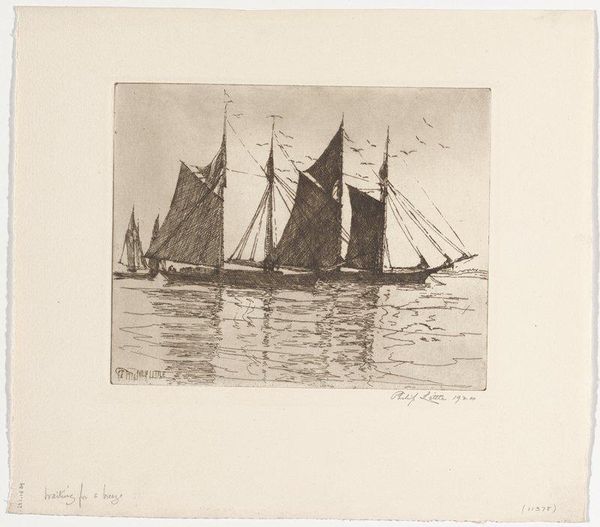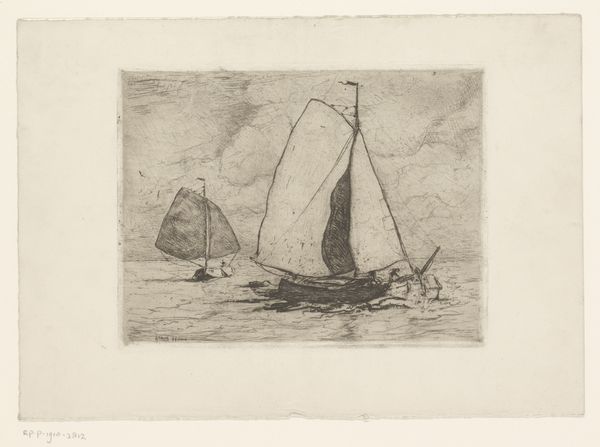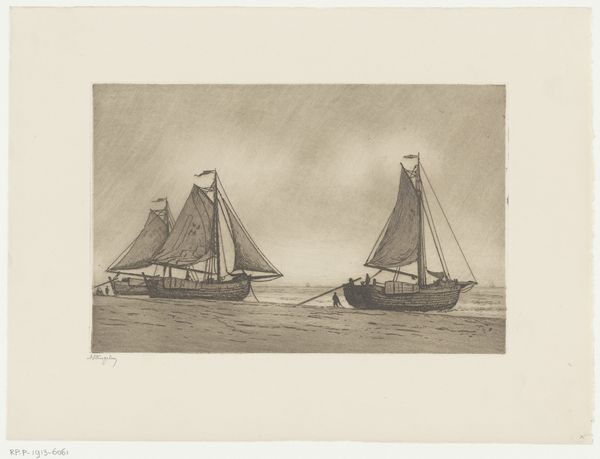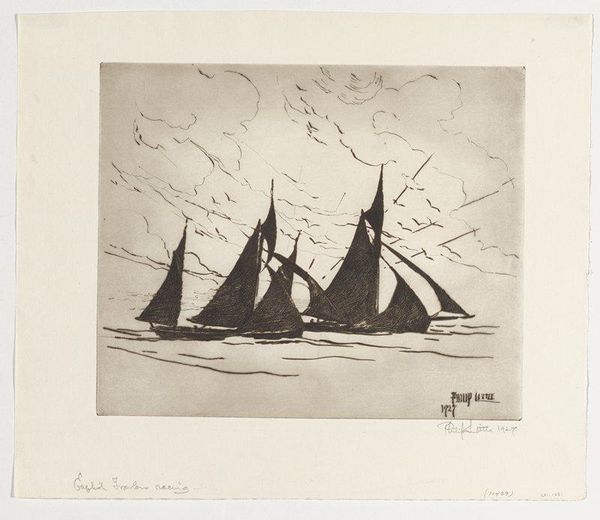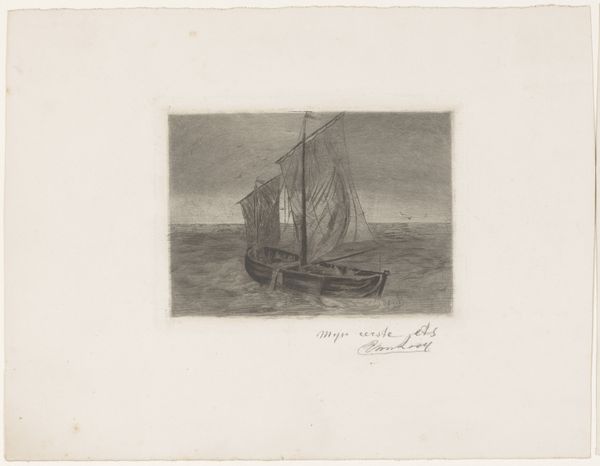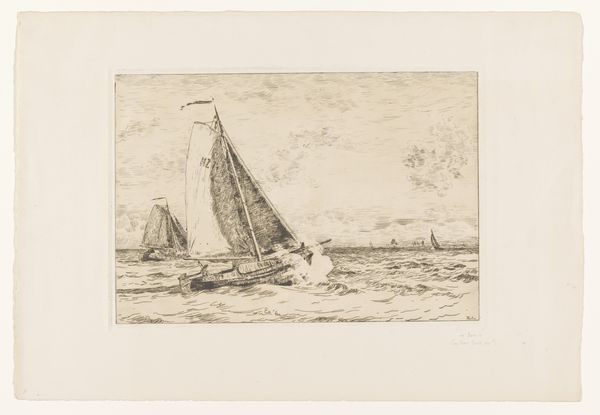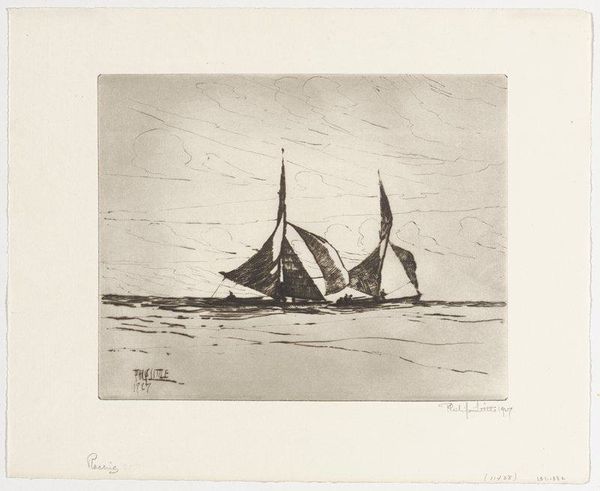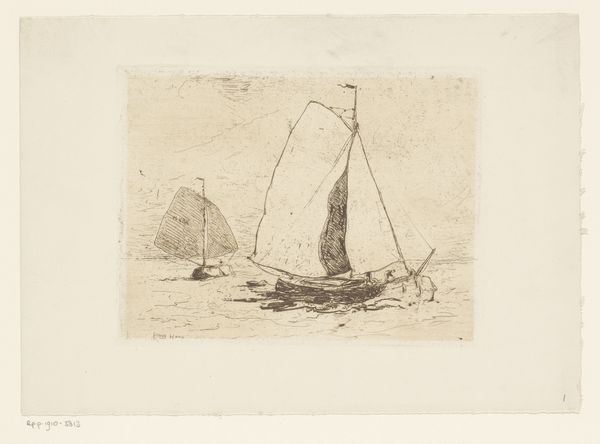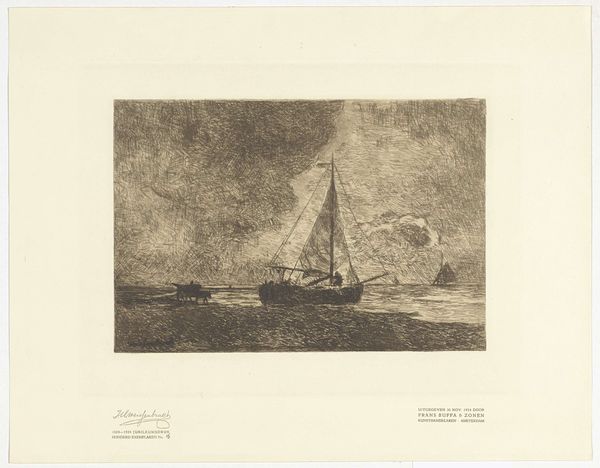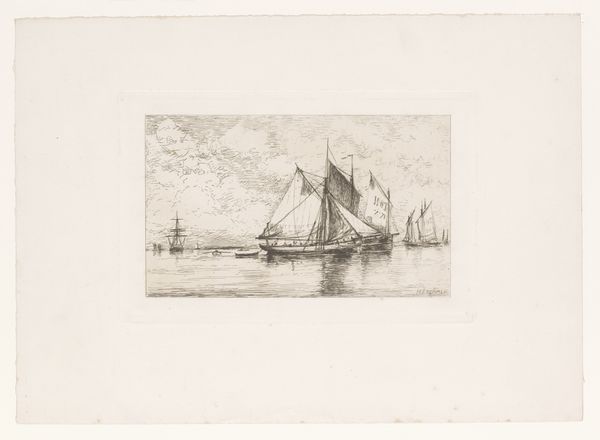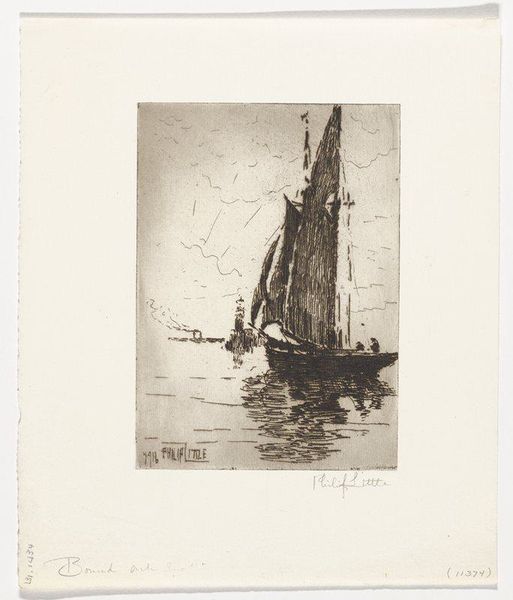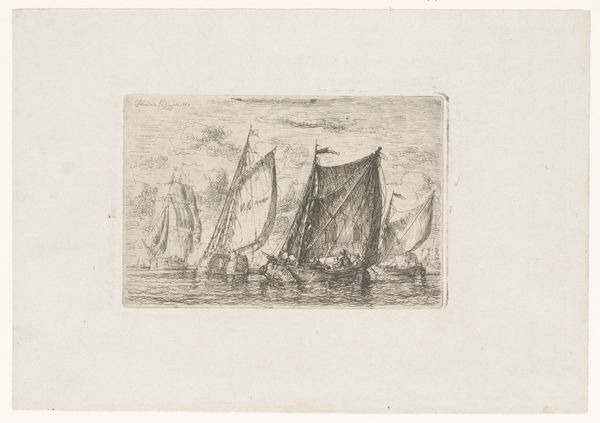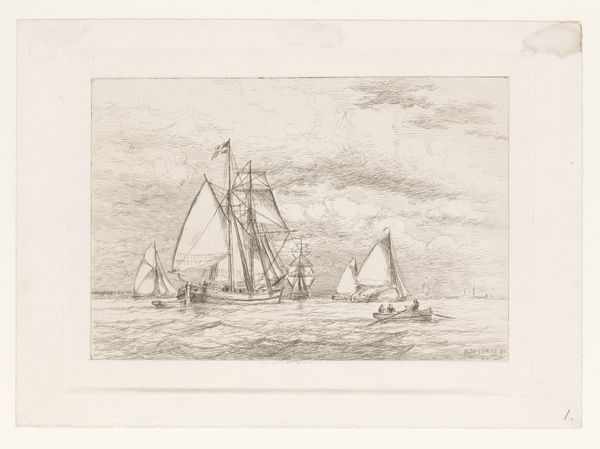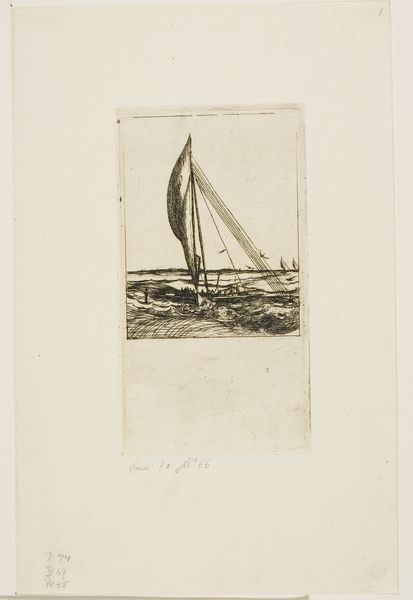
drawing, print, etching, paper
#
drawing
# print
#
etching
#
landscape
#
paper
Dimensions: 9 13/16 x 9 7/8 in. (24.92 x 25.08 cm) (plate)12 15/16 x 16 in. (32.86 x 40.64 cm) (sheet)
Copyright: No Copyright - United States
Editor: This is Philip Little’s “The New Brunswicker,” an etching from 1919. It has such a quiet, reflective mood; the lines feel both precise and ephemeral. How do you interpret this work? Curator: It's interesting you picked up on that mood. I see a quiet dignity. It reminds me of simpler times, almost romantic, doesn’t it? Think about it: a lone schooner, rendered in these delicate, almost hazy lines… I imagine Little gazing out at the sea, maybe longing for a world untouched by the first World War. There’s a certain nostalgia baked into this piece, wouldn’t you say? Editor: Definitely, there's something melancholic about the haziness and maybe about being in the immediate aftermath of WWI. Curator: Exactly. Look closely at the etching technique. Those fine lines almost vibrate. I can imagine Little meticulously layering the ink, almost caressing the metal plate. What feelings do you think he was attempting to evoke in this piece? Editor: Perhaps a sense of resilience or the enduring nature of the sea and ships as symbols of hope amid turbulent times. Was this a common theme for artists after the war? Curator: Very perceptive! Many artists sought solace in nature, attempting to recapture beauty and stability after such devastation. The ocean, in particular, represented both freedom and the immensity of life’s journey. Maybe Little, through “The New Brunswicker,” was quietly searching for that very freedom himself. Editor: I never thought about it that way. I see how an artist uses nature to express internal struggle and aspirations. Thank you. Curator: My pleasure! Art always reflects the artist's soul in that era.
Comments
No comments
Be the first to comment and join the conversation on the ultimate creative platform.
